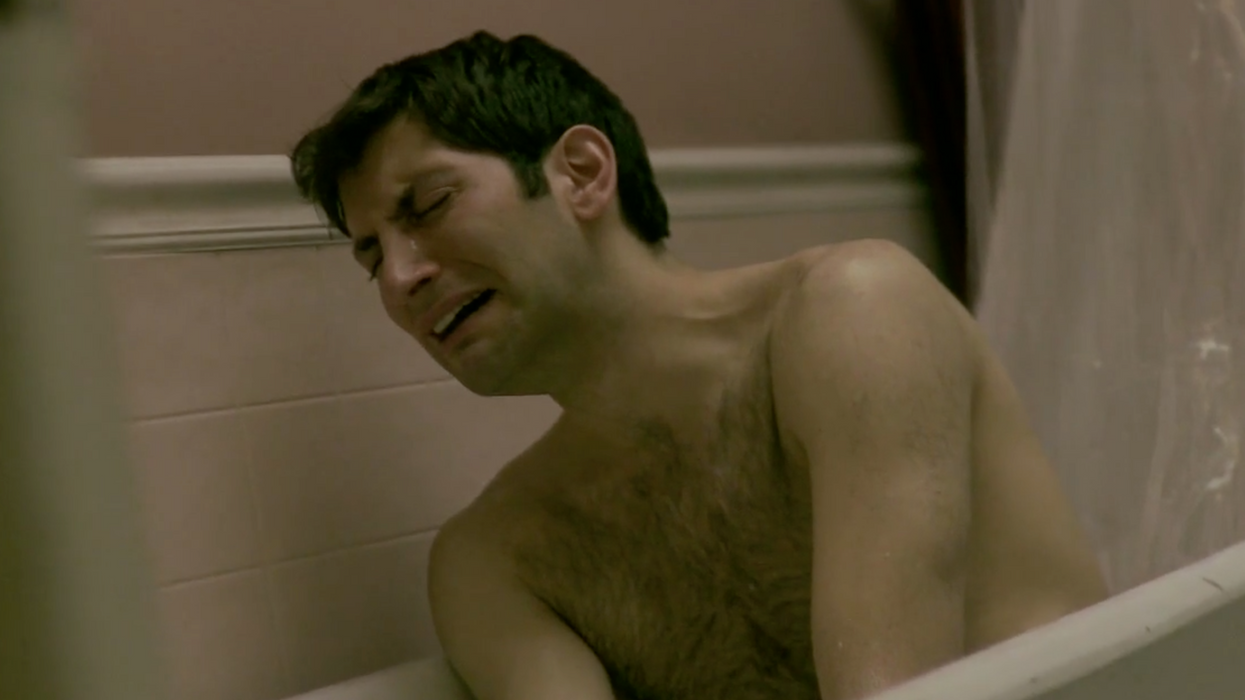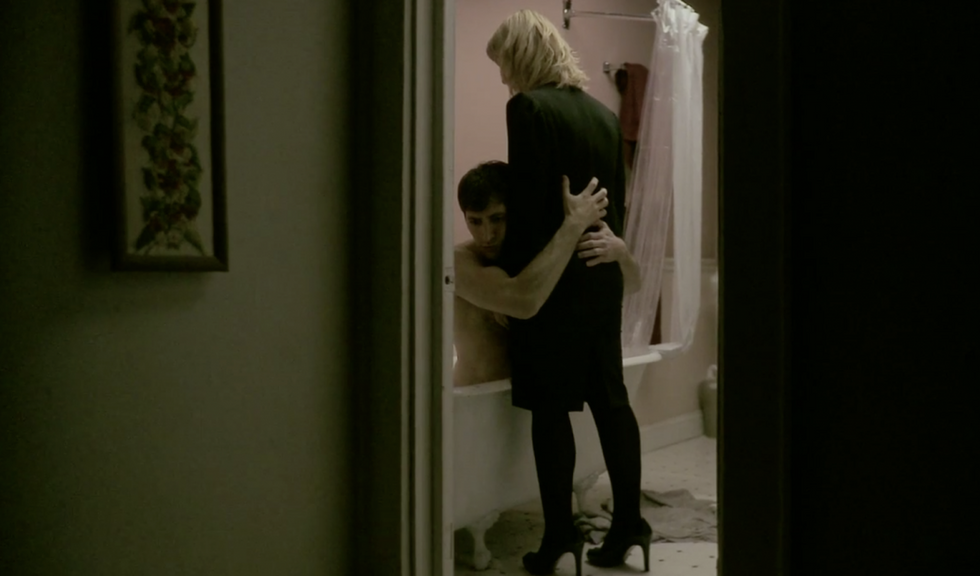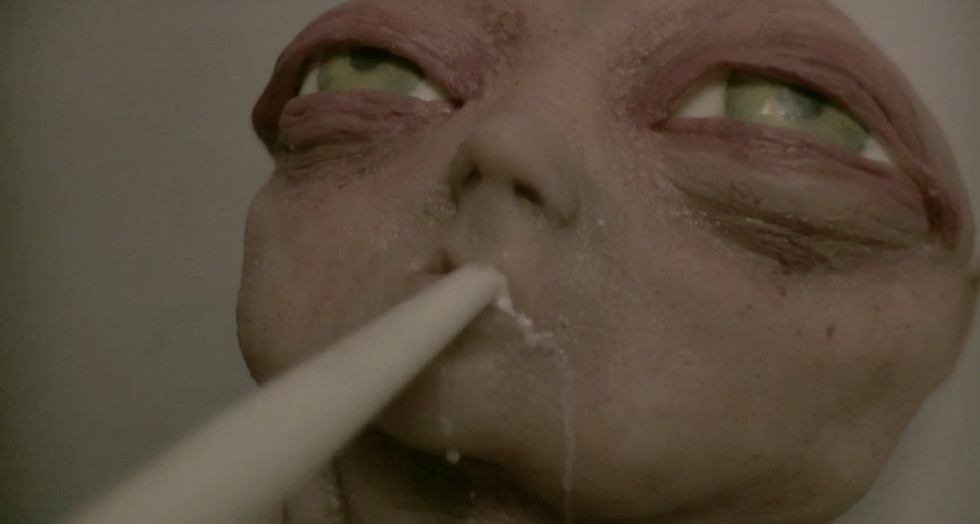From Successful Short to Depression to Finishing the Feature 6 Years Later: 'The Master Cleanse'
A movie about a man impregnating a shower gets the short-to-feature treatment. Here's how it all went down.

Writer/director/actor Bobby Miller burst onto the scene with his short film TUB, which was an official selection in 2010 of both Sundance and SXSW. The short's synopsis is self-explanatory: "Paul jerked off in the shower. Paul just impregnated his bath tub." If that description makes you think, "Okay but that should really be a feature-length story," you aren't the only one. Following the success of his short, Bobby began developing it into a feature.
The Master Cleanse premiered at SXSW 2016, six years following TUB. It's a spiritual successor to the short, but not specifically an adaptation; Bobby reaches into the same bag of trips for practical creature effects, with some of the same story beats and structure, while also transitioning into a more serious tone, befitting a feature-length narrative.
No Film School spoke with Miller via email about the six-year story of how he got The Master Cleanse made. But first, watch the short:
No Film School: The Master Cleanse has a lot in common with your short from 2010, TUB. Did you know you wanted to make a feature out of TUB going into it? What was the development process like in turning it into a feature?
Bobby Miller: So, TUB came first. The idea for that came in 2006. I tried for years to get grant money from film school to make it, but that wasn’t in the cards. So, I took out a student loan to pay for it in 2009. Around 2009ish, I got the idea for The Master Cleanse, and by the time TUB was on the festival circuit in 2010, I had a first draft [of the feature]. I moved to LA (from New York) and got a manager and took a lot of general meetings. I want to say for a year or two. Everyone liked TUB and the new script, but it was apparently too weird for everyone (go figure).
"I found having a pitch packet and visuals to be tremendously helpful, especially if it’s your first feature."
Cut to: depression. I wrote another script during that time, but this movie kept haunting me and luckily I eventually met Jordan Horowitz. He was the first producer to get behind the movie. We worked on the script for a bit and when we were both happy with it, [we] started getting it out to agencies for actors to read. Meanwhile, I was reaching out to artists to start generating creature designs. I knew once we got the green light, we wouldn’t have time to develop that stuff. Johnny Galecki got on board first and we decided to shoot a test film with him and his creature. There was a certain emotionality underneath the humor and weirdness of the film and we felt like we needed a sample to show what the heck we were talking about. I found having a pitch packet and visuals like that to be tremendously helpful, especially if it’s your first feature.

NFS: What was the process of approaching name actors like Anjelica Huston and Oliver Platt? Did you always intend to "cast up" the supporting roles?
Miller: Well, luckily the process got easier once Johnny was on board. He really [was] integral to the whole film being made. After that, it was just a matter of getting the script and the scene in front of actors. I found more often that not, they at least wanted to meet the guy who wrote it. You know, just to see if I was a mutant or something.
"It was really important to me that the effects felt seamless; that you didn’t know where the practical effects ended and the CGI began."
NFS: How much of the creature effects are practical versus CGI?
Miller: Most of it is practical. The CGI effects are really a form of “sweetening” and making the creatures feel less like dead-eyed puppets. For example, making their eyes follow other characters, blinks, subtle nuances in the faces, lip twitches. It was really important to me that the effects felt seamless, that you didn’t know where the practical effects ended and the CGI began.
NFS: What was the biggest obstacle you faced in making this film, and how did you overcome it?
Miller: The biggest obstacle is time. With TUB, it was my own money (A.K.A. mounting student loan debt), so I had control over things. With The Master Cleanse, there was a hard reality to things. Every day you’re presented with things that derail your plans and you have to think creatively [about] how to pull things off with the resources you have.

Miller: We used the Arri Alexa. I always thought it offered up the best “out of the box” footage. Very film-like. I find other cameras need time in color to get right and I knew we wouldn’t have the budget or time for that.
NFS: What advice would you have for other filmmakers?
Miller: Keep your head down and do the work. Meaning: getting a film made can be a really long hard journey that’s frustrating and depressing and everything else. But every time I got a setback I just came back [to] the script and worked on it some more. I figured I would turn this “luxury” of time into a positive. At least, that’s what I was telling myself.
NFS: Being at SXSW, what do you think works for networking at a festival with others in the industry? Any do's and don’ts?
Miller: I’m the worst person to take advice from on this one. I’m terrible at networking. I don’t like “selling myself” in a conversation. It just feels gross, so I usually downplay everything. I find festival-going to be integral in finding like-minded filmmakers, but finding people who have money to make your next thing... I don’t really know how to do that. In fact, if anyone reading this has money, I have a new script for you.
For more, see our complete coverage of the 2016 SXSW Film Festival. Listen to our podcasts from SXSW (or subscribe in iTunes):
No Film School's coverage of the 2016 SXSW Film Festival is sponsored by SongFreedom.












